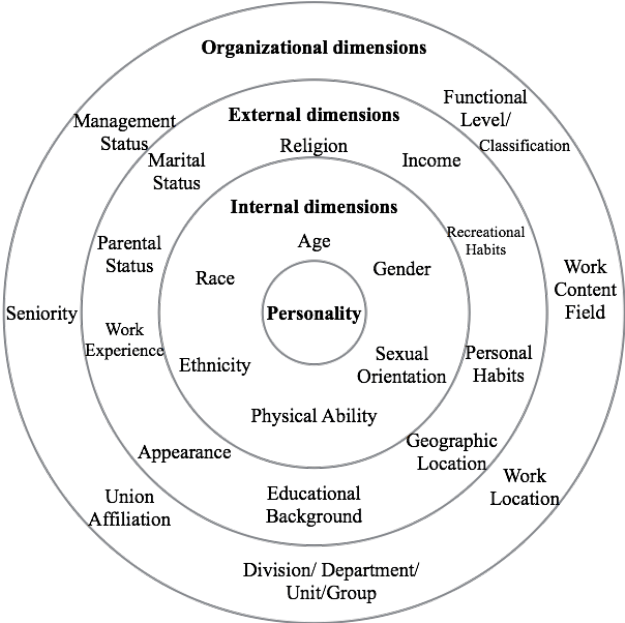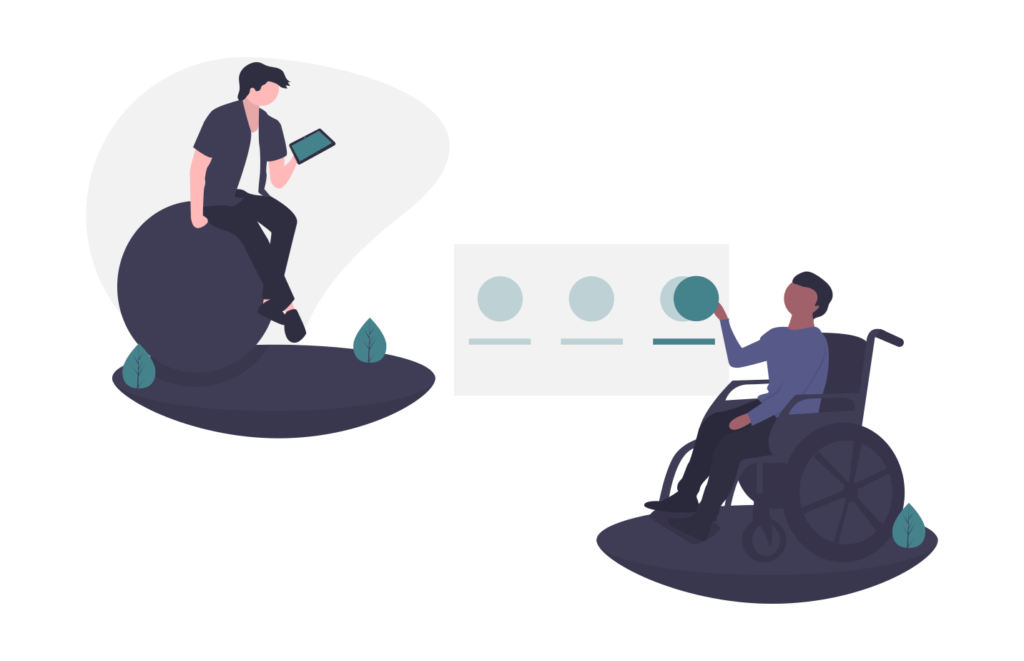The Role of Stakeholder Engagement in DEI Programs

Over the last few years, many corporations, big businesses, and government groups have been increasingly proactive when it comes to diversity in the workplace.
Many have introduced Diversity, Equity & Inclusion (DEI) programs like policies, practices, and training, that aim to improve workforce diversity, participation, representation, and experiences for diverse groups. These groups may be disadvantaged or underrepresented due to their culture, religion, age, gender, sexual orientation, ability, race, ethnicity, geographic location, and other characteristics.
Unfortunately, these initiatives don’t always translate to outcomes. In fact, a great many DEI programs fail.
So, let’s take a closer look at what the research says about diversity programs — and how you can use stakeholder engagement best practices to set your DEI program up for success.
Note: Of course, there’s a whole other issue we could talk about here. That is, how diversity, equity, and inclusion could impact on your stakeholder engagement process. But for now, we’re going to focus on DEI program implementation and management — and the role stakeholder engagement can play.
DEI Programs: Not Just a Trend
First thing’s first: why should you care about diversity, equity, and inclusion? Does the issue really warrant your time?
If you take a look at Google Trends, you’ll see that searches for diversity and inclusion suddenly peaked in 2020, and the level of interest has not dropped.
Following the COVID-19 pandemic and movements like Black Lives Matter and Me Too shining the light on injustice and inequality, more organizations are focusing on social issues than ever.
In 2021, U.S. president, Joe Biden, enacted an executive order on diversity, equity, inclusion, and accessibility in the Federal workforce. This order established that the Administration’s policy was to ‘cultivate a workforce that draws from the full diversity of the Nation’, becoming a model for diversity, equity, inclusion, and accessibility.
Meanwhile, in the corporate world, commitments to DEI efforts and pushback against them have also increased. According to Gartner, 31.4% of employees report greater focus on DEI in the last few years, and 42% say their peers felt resentment towards DEI initiatives.
It would seem that DEI is much more than a fleeting trend — and that (for the most part) workplace diversity still has a long way to go.
The Business Case for DEI
Diversity, equity, and inclusion are unquestionably good practices from a moral standpoint. But what about a business standpoint? It appears that there’s a solid business case for DEI, too:
- According to Deloitte, 83% of millennials are more actively engaged at work when they believed their company supported diversity and inclusivity (compared to just 60% in companies that did not)
- McKinsey found that companies whose executive teams were in the top quartile for gender or ethnic diversity financially outperformed the bottom quartile — a finding that has been consistent across studies done in 2014, 2017, and 2019
- Gartner predicted that 75% of companies with diverse workforces would exceed financial targets in 2022, outperforming less inclusive teams by 50%, on average
- Good diversity practices minimize brand and reputation risks, as well as potential litigation
It’s clear that workplace diversity, inclusion, and equity issues are here to stay. And tackling these issues is good for business.
What Has Stakeholder Engagement Got To Do With It?

In order to get real change that drives real value, DEI programs require long-term commitment and strong support throughout the organization. This means that it’s worth investing time and resources into developing the right programs, and ensuring they’re rolled out and managed successfully. And that requires stakeholder engagement.
Stakeholder engagement seeks to identify, understand, and communicate with stakeholders, while providing them with opportunities to respond and participate. The engagement process can be invaluable for developing, rolling out, and managing your diversity program. So, let’s explore 13 stakeholder engagement practices and how they can support your DEI program.
13 Stakeholder Engagement Practices for DEI Success
1. Set Goals
Every good stakeholder engagement strategy starts with goals. What outcome are you hoping to achieve from the engagement (and DEI program)? How will you know you’ve been successful or unsuccessful?
Your goals might include:
- Increased awareness
- More inclusive behavior
- Participation from all stakeholder groups
- Participation from historically underrepresented groups
- More positive sentiment
2. Identify Stakeholders
Who are your stakeholders? Consider who might be impacted by or have an impact on your program, and create a list of these stakeholders. When applied to your workplace DEI program, your stakeholders may include:
- Executive leadership team
- In-house staff
- External contractors
- Specific groups within your workforce (e.g. women, racial/ethnic minorities, or marginalized groups)
- Current and future job candidates
- Clients/customers
- Investors
- External regulators
Unless you know who your stakeholders are, you won’t know if they are fairly represented in the engagement. And it’s critical that you engage the groups of people you hope to support or reach through your DEI program.
3. Analyze Stakeholders

Source: Diversity management’s stakeholders and stakeholders management
Once you’ve identified your stakeholders, conduct stakeholder analysis to better understand them.
When analyzing stakeholders, it may also be helpful to look at them through a DEI lens, assigning attributes to understand whether they belong to a diverse group. One model for this is the Four Layers of Diversity, originally developed by Gardenswartz & Rowe (2003) and adapted by Jolanta Maj (2015).
This model outlines four dimensions with underlying characteristics:
-
- Organizational dimensions – Functional level/classification, Work Content Field, Work Location, Divison/Department/Unit/Group, Union Affiliation, Seniority, Management Status
- External Dimensions – Religion, Income, Recreational Habits, Personal Habits, Geographic Location, Educational Background, Appearance, Work Experience, Parental Status, Marital Status
- Internal Dimensions – Age, Gender, Sexual Orientation, Physical Ability, Ethnicity, Race
- Personality Dimensions
4. Map Stakeholders
Stakeholder mapping can help you identify their issues and interests, discover trends, and organize stakeholders into groups based on shared attributes.
This can help you tailor your engagement strategy and communication to specific stakeholder groups. Each stakeholder will have different issues that matter to them, and identifying these can help you address these issues with the right individuals and gain their support.
5. Communicate with Stakeholders
Regular communication is one of the best ways to overcome resistance to your DEI program. A combination of emails, memos, noticeboards, face-to-face conversations, and other methods can be used. Through ongoing communication (informed by your stakeholder analysis), you can:
- Educate and build awareness
- Develop empathy
- Overcome objections and address concerns
- Increase transparency and trust
- Improve accountability
- Provide information about changes
- Share resources
- Manage expectations
- Unite around shared goals
- Build a case for improving diversity, equity, and inclusion
6. Consult Stakeholders
Go beyond communicating with stakeholders to actually consulting them. This means seeking input from those who may be impacted by a decision. Example approaches include:
- Anonymous surveys to learn about employee experiences, objections, and ideas
- Suggestion boxes for employees to put forward ideas about improving inclusion at work
- Focus groups that create a space where employees can share about their personal experiences
Stakeholder consultation will allow you to tap into each group’s expertise, experiences, and perspectives so that you can develop a more effective DEI program, communication, and rollout.
7. Encourage Participation
Without broad participation (from all impacted groups), your consultation won’t give you the full picture — and the decisions you make based on your engagement are less likely to be accepted or successful.
So, how can you encourage participation from all stakeholder groups?
- Monitor – Monitor your participation to measure whether you’re successful in reaching all your stakeholders
- Adjust – You may need to adjust your approach to ensure you’re not missing valuable perspectives and insights
- Vary – Participation might look different for different types of stakeholders, so you may need to provide a range of engagement formats (both online and offline)
Pay special attention to ensuring marginalized groups are represented. Find ways to encourage their participation, make information easy to understand, and make events accessible.
8. Gather Feedback
Regular stakeholder feedback can provide insights into pushback, sentiments, areas for improvement, and progress.
Any response (or even lack of response) from stakeholders could be considered feedback worth noting. But one of the most common ways to gather feedback is through quarterly or annual surveys that look at your company through a diversity, equity, and inclusion lens. You could ask a mixture of quantitative and qualitative questions like:
- Are you comfortable bringing your authentic self to work?
- Have you personally experienced or witnessed racism in the workplace in the last month?
- On a scale of 1-10, how would you rate our organization’s current level of inclusiveness? (Where 1 is extremely low and 10 is extremely high.)
- Please describe any areas where our organization could improve diversity, equity, or inclusion.
- What would you change in order to improve diversity, equity, or inclusion in our organization? Please add any ideas or suggestions you may have.
By asking the same set of questions each time, you can track any improvements.
9. Apply Stakeholder Feedback
Feedback from stakeholders should be used to shape decisions and create real change. This could mean:
- Developing your DEI program in consultation with employees
- Working with stakeholders to draft a Diversity, Equity & Inclusion statement that outlines your organization’s commitment
- Prioritizing issues and changes suggested by stakeholders
10. Engage with External Groups
Although we’ve focused mainly on internal engagement, it’s important to also engage and communicate with external stakeholders. Your approach and commitment to DEI should be consistent, with public-facing efforts matching internal practices and culture. If they’re not, your efforts may backfire.
For example, back in 2018, Starbucks closed many of their stores for half a day so that staff could undergo racial bias training, and in 2020 they announced they would donate $1 million towards racial justice causes. Not long after this, an internal memo banned employees from wearing merchandise to support Black Lives Matter. Following backlash, this policy was reversed and Starbucks even distributed BLM shirts to their employees. In 2021, they announced a $100 million fund to support equity and inclusion in its communities. However, this inconsistency between internal and external practices calls into question whether Starbucks’ DEI initiatives were truly genuine.
11. Track and Monitor Stakeholders

Throughout the stakeholder engagement process, it’s critical to consistently track and monitor stakeholder relationships, communication, and feedback. The right tool can help you efficiently coordinate every part of your engagement so that you can get the best outcomes.
Although some organizations use spreadsheets or CRMs, stakeholder relationship management software is the best tool to track stakeholder relationships.
Looking for a smarter way to manage relationships? Simply Stakeholders offers a range of powerful features, including stakeholder analysis and mapping, sentiment tracking, communication, analytics, reporting, and much more.
Take a closer look at how our stakeholder software works or contact us to request a demo.
12. Report on Engagement
It’s important to report on the impact of your DEI program and stakeholder engagement. Share data on the results and changes you’re experiencing in your organization. This might include:
- Feedback from employees and job candidates
- Prevalence of diverse/marginalized groups
- Approval ratings
- Sentiment
By sharing this information with stakeholders, you can demonstrate how your initiatives are performing — which can support ongoing engagement, boost enthusiasm, increase accountability, and encourage buy-in from a larger group of stakeholders.
13. Think Long-Term
Last but not least… remember that it’s a marathon, not a race. So, continue to engage with stakeholders as you develop, implement, and manage your DEI initiatives — and refine the process based on the feedback and results.
Learn More
Keen to implement a stakeholder engagement approach to diversity, equity, and inclusion? Here are some other resources you might like to check out:
- Stakeholder Engagement Best Practices [Article]
- A Guide to Stakeholder Analysis [Guide]
- 7 Strategies for Effective Stakeholder Engagement [eBook]






























